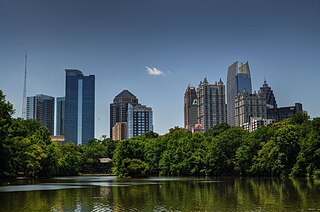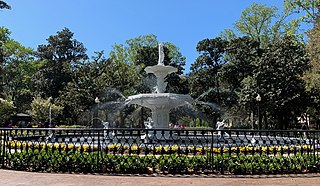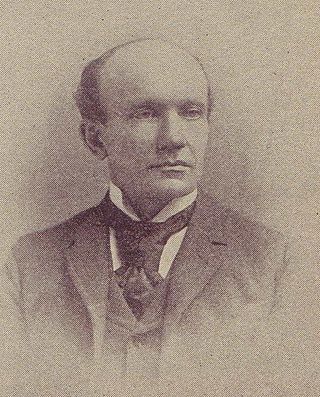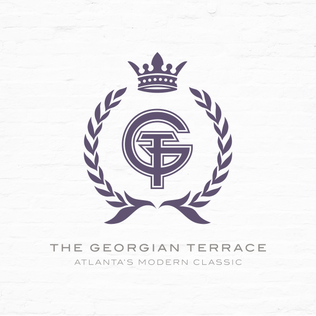
Midtown Atlanta, or Midtown, is a high-density commercial and residential neighborhood of Atlanta, Georgia. The exact geographical extent of the area is ill-defined due to differing definitions used by the city, residents, and local business groups. However, the commercial core of the area is anchored by a series of high-rise office buildings, condominiums, hotels, and high-end retail along Peachtree Street between North Avenue and 17th Street. Midtown, situated between Downtown to the south and Buckhead to the north, is the second-largest business district in Metro Atlanta. In 2011, Midtown had a resident population of 41,681 and a business population of 81,418.

Savannah College of Art and Design (SCAD) is a private art school with locations in Savannah, Georgia; Atlanta, Georgia; and Lacoste, France. It was founded in 1978 to provide degrees in programs not yet offered in the southeast of the United States. The university enrolls more than 16,000 students from across the United States and around the world with international students comprising up to 17 percent of the student population. SCAD is accredited by the Southern Association of Colleges and Schools Commission on Colleges and other professional accrediting bodies.

Inman Park is an intown neighborhood on the east side of Atlanta, Georgia, and its first planned suburb. It was named for Samuel M. Inman.

Forsyth Park is a large city park that occupies 30 acres (0.12 km2) in the historic district of Savannah, Georgia, United States. The park is bordered by Gaston Street to the north, Drayton Street to the east, Park Avenue to the south and Whitaker Street to the west. It contains walking paths, a children's play area, a Fragrant Garden for the blind, a large fountain, tennis courts, basketball courts, areas for soccer and Frisbee, and home field for Savannah Shamrocks Rugby Club. From time to time, there are concerts held at Forsyth to the benefit of the public.

Godfrey Leonard Norrman, was an important architect in the southeastern United States. A number of his commissions are now listed on the National Register of Historic Places, and in 1897 he was made a Fellow of the American Institute of Architects.

The Edward C. Peters House, also known as Ivy Hall, is a Queen Anne style house in Atlanta, Georgia. It occupies a lot covering an entire city block on the southeast corner of Piedmont Avenue and Ponce de Leon Avenue in Midtown Atlanta, just north of the SoNo neighborhood. Its current owner is the Savannah College of Art and Design.

William Lee Stoddart (1868–1940) was an architect who designed urban hotels in the Eastern United States. Although he was born in Tenafly, New Jersey, most of his commissions were in the South. He maintained offices in Atlanta and New York City.

The Georgian Terrace Hotel in Midtown Atlanta, part of the Fox Theatre Historic District, was designed by architect William Lee Stoddart in a Beaux-Arts style that was intended to evoke the architecture of Paris. Construction commenced on July 21, 1910, and ended on September 8, 1911, and the hotel opened on October 2, 1911. The George C. Fuller Construction Company was contractor, and the developer was Joseph F. Gatins, Jr.

Richard C. Kessler is an entrepreneur in the field of hotel development and operations. Kessler has been Chairman and CEO of The Kessler Enterprise, Inc. since 1984. He is also Former Chairman, President and CEO, Days Inn of America, Inc. and Former Chairman of Lutheran Brotherhood.

Hotel Indigo Atlanta Midtown is a historic building in midtown Atlanta, Georgia. Designed by Atlanta-based architectural firm Pringle and Smith in 1925, the brick building is located on Peachtree Street, across from the Fox Theatre. It has been listed on the National Register of Historic Places since 2006, and, in 2022, is a member of Historic Hotels of America.
The Savannah Historic District is a large urban U.S. historic district that roughly corresponds to the city limits of Savannah, Georgia, prior to the American Civil War. The area was declared a National Historic Landmark District in 1966, and is one of the largest districts of its kind in the United States. The district was made in recognition of the unique layout of the city, begun by James Oglethorpe at the city's founding in 1733 and propagated for over the first century of its growth.

The Armstrong Kessler Mansion is a nationally significant example of Italian Renaissance Revival architectural style located in the Savannah Historic District. The structure was built between 1917 and 1919 for the home of Savannah magnate George Ferguson Armstrong (1868–1924). It was owned by the Armstrong family from 1919 to 1935. Afterward, the structure and grounds served as the campus of Armstrong Junior College. Threatened with demolition, the Historic Savannah Foundation purchased the Armstrong House along with five other threatened historic buildings from the college for $235,000 in 1967. Once saved, Historic Savannah Foundation sold the Mansion at the exact purchase price to preservationist and antique dealer Jim Williams who restored it as his home. Eventually, both were sold to a major Savannah law firm as offices. The mansion was featured in The American Architect in 1919, and listed in A Field Guide to American Houses in 1984.

Founded in the 1830s as a railroad terminus, Atlanta experienced rapid growth in its early years to become a major economic center of Georgia, with several hotels built to accommodate for this growth. Following its destruction during the Civil War, Atlanta experienced a resurgence and another hotel boom commenced in the late 1800s through the early 1900s. In the later half of the 20th century, hotel skyscrapers began to appear on the skyline, including what was at the time the tallest hotel in the United States. Later, a trend emerged of converting old office buildings into boutique hotels.

Historic Hotels of America is a program of the National Trust for Historic Preservation that was founded in 1989 with 32 charter members; the program accepts nominations and identifies hotels in the United States that have maintained their authenticity, sense of place, and architectural integrity.

The Civil War Memorial in Savannah, Georgia, is a monument honoring soldiers who died during the American Civil War. Located in Forsyth Park, it consists of a 48 foot (15 m) tall shaft topped with a bronze statue of a Confederate soldier. Two bronze busts commemorating notable Confederate army officers flank the monument, which is protected by a railing, one of the only two that still stand around a monument, the other being the Casimir Pulaski Monument in Monterey Square. Originally known as the Confederate Monument, it was dedicated in 1875 to honor Confederate soldiers who died during the Civil War. Following the Unite the Right rally, the city of Savannah renamed and rededicated the structure in 2018. The monument is one of the oldest and largest Confederate monuments in Georgia.

Poetter Hall is an academic building in Savannah, Georgia, United States. Designed by William G. Preston and completed in 1893, the building originally served as a National Guard Armory and was called the Savannah Volunteer Guards Armory. In 1979, the building underwent an extensive renovation and became the first academic building for the Savannah College of Art and Design.
Andrew Low II was a Scottish-American cotton merchant.

Drayton Street is a prominent street in Savannah, Georgia, United States. Located between Bull Street to the west and Abercorn Street to the east, it runs for about 2 miles (3.2 km) from East Bay Street in the north to East Victory Drive in the south. It is named for Ann Drayton, a member of a noted family in Charleston, South Carolina, who had lent four sawyers to assist colonists in building one of the first homes in Savannah. The street is one-way (northbound). Its northern section passes through the Savannah Historic District, a National Historic Landmark District.

George Ferguson Armstrong was an American businessman. In 1918, he built Armstrong House in Savannah, Georgia.


















